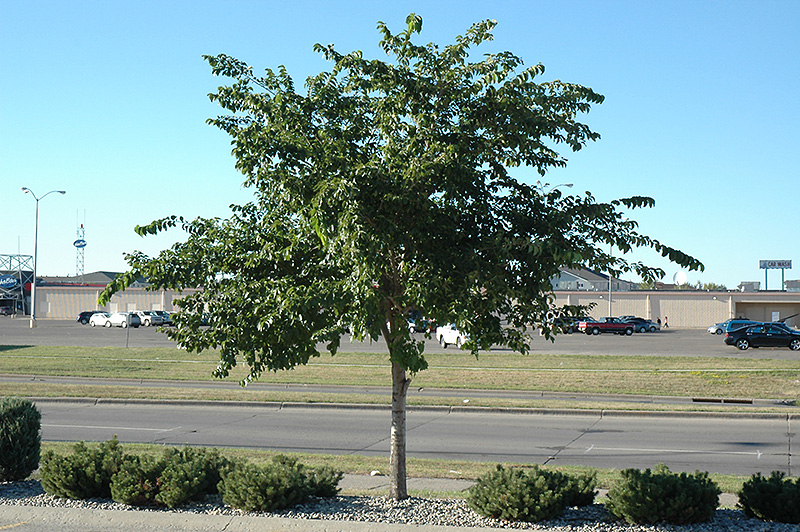PLANT FINDER
Prairie Expedition Elm
Ulmus americana 'Lewis & Clark'
Height: 70 feet
Spread: 60 feet
Sunlight:
![]()
Hardiness Zone: 2b
Other Names: White Elm, Water Elm, Gray Elm, Swamp Elm
Description:
Finally, a hardy American elm that shows good resistance to Dutch Elm Disease; this tough selection from the plains of North Dakota features the coveted umbrella-like form of the classic elm, large and wide-spreading, ideal for use in larger landscapes
Ornamental Features
Prairie Expedition Elm is primarily valued in the landscape for its ornamental globe-shaped form. It has dark green deciduous foliage. The large serrated pointy leaves turn an outstanding yellow in the fall.
Landscape Attributes
Prairie Expedition Elm is a deciduous tree with a more or less rounded form. Its relatively coarse texture can be used to stand it apart from other landscape plants with finer foliage.
This is a relatively low maintenance tree, and is best pruned in late winter once the threat of extreme cold has passed. It has no significant negative characteristics.
Prairie Expedition Elm is recommended for the following landscape applications;
- Shade
Planting & Growing
Prairie Expedition Elm will grow to be about 70 feet tall at maturity, with a spread of 60 feet. It has a high canopy of foliage that sits well above the ground, and should not be planted underneath power lines. As it matures, the lower branches of this tree can be strategically removed to create a high enough canopy to support unobstructed human traffic underneath. It grows at a fast rate, and under ideal conditions can be expected to live to a ripe old age of 100 years or more; think of this as a heritage tree for future generations!
This tree should only be grown in full sunlight. It is an amazingly adaptable plant, tolerating both dry conditions and even some standing water. It is not particular as to soil type or pH, and is able to handle environmental salt. It is highly tolerant of urban pollution and will even thrive in inner city environments. This is a selection of a native North American species.


